Home> Company News> Rod End Evolution: The Origins, Uses, and Innovations Over Time
- AddressToh Guan Centre, 31/F,69 Toh Guan Rd E, Singapore 608609
- Factory AddressToh Guan Centre, 31/F,69 Toh Guan Rd E, Singapore 608609
- Worktime9:00-18:00
- Phone(Working Time)0065-31591578
- Phone(Nonworking Time)0065-31591578
- Fax0065-31591339
Rod End Evolution: The Origins, Uses, and Innovations Over Time
2024-07-20 10:01:07Introduction
Rod ends are essential mechanical components widely used in various industries, playing a crucial role in connecting and controlling movement in machinery. These components facilitate linear and rotational motion, making them indispensable in applications ranging from automotive to aerospace engineering. Understanding the evolution of rod ends not only highlights their historical significance but also emphasizes the importance of their design and functionality in modern engineering.
Overview of Rod Ends as Mechanical Components
A rod end is essentially a type of joint that connects two components while allowing for relative motion. It consists of a spherical bearing housed within a metal casing, providing multidirectional movement. This capability is particularly useful in applications requiring flexibility and stability under load. The versatility of rod ends makes them suitable for various systems, including suspension systems, robotic arms, and industrial machinery.
Importance of Understanding Their Evolution
Exploring the evolution of rod ends offers valuable insights into how design advancements have improved performance, durability, and application range. From their inception to contemporary innovations, understanding this evolution helps engineers and technicians make informed decisions regarding the selection and application of rod ends in specific environments.
Purpose of Exploring Their Historical Context and Modern Innovations
Delve into the historical background of the Rod End, tracing its evolution from a simple mechanical joint to a complex component that is integral to modern engineering solutions.Additionally, we will examine recent innovations that have enhanced the functionality and reliability of rod ends, showcasing how these advancements meet the demands of today's industries. By exploring both the origins and modern innovations, this discussion will provide a comprehensive understanding of the significance of rod ends in engineering.
|
Aspect |
Details |
|
Historical Development |
The evolution of rod ends began with simple joints in mechanical engineering, primarily made from steel and bronze. |
|
Early Uses |
Found in automotive (steering mechanisms), aerospace (aircraft linkages), and manufacturing. |
|
Application Significance |
Enabled precise control and movement, showcasing versatility and reliability in various industries. |
|
Design Evolution |
Transitioned from basic designs to complex functionalities with advanced materials and engineering techniques. |
|
Technological Advancements |
Introduction of spherical bearings for greater flexibility and load capacity, improving performance capabilities. |
|
Modern Features |
Incorporates corrosion resistance, self-lubrication, and tailored designs for specific applications. |
|
Current Importance |
Indispensable in modern engineering, reflecting significant advancements in design and functionality. |

Traditional Uses of Rod Ends
Original Applications in Automotive and Industrial Machinery
Rod ends have been integral components in both the automotive and industrial machinery sectors since their inception. In automotive applications, rod ends were primarily used in steering systems, providing the necessary articulation to allow for smooth vehicle maneuverability. Early designs facilitated connection points in suspension systems, linking various components while accommodating the movement required during operation. Similarly, in industrial machinery, rod ends played crucial roles in the assembly of conveyor belts, robotic arms, and other machinery where precise movement and reliability were paramount.
Roles in Enhancing Mechanical Linkages and Movements
The primary function of rod ends is to enhance mechanical linkages, allowing for flexible movement between connected parts. By providing a pivotal connection, rod ends enable components to move in multiple directions while maintaining structural integrity. This capability is essential in applications where linear and rotational motions must coexist, such as in automated assembly lines and robotic systems. The design of rod ends promotes smooth transitions and helps prevent undue stress on other components, thereby extending the lifespan of the entire assembly.
Impact on Efficiency and Functionality in Early Designs
The introduction of rod ends significantly improved the efficiency and functionality of early mechanical systems. By replacing rigid joints with flexible rod ends, engineers could design systems that were more adaptable to dynamic loads and varied operational conditions. This adaptability not only increased the reliability of machinery but also enhanced overall performance, allowing for smoother operations with reduced wear and tear. Early adopters of rod ends recognized their value in optimizing mechanical designs, leading to widespread use across various industries.
|
Technological Innovations |
Description |
|
Advances in Materials Used for Rod Ends |
The evolution has led to the use of high-strength alloys and advanced composites, improving corrosion resistance and load capacity for reliable performance in harsh environments. |
|
Advances in Materials Used for Rod Ends |
The evolution has led to the use of high-strength alloys and advanced composites, improving corrosion resistance and load capacity for reliable performance in harsh environments. |
|
Incorporation of Precision Manufacturing Techniques |
Techniques like CNC machining and additive manufacturing allow for tighter tolerances and improved geometries, ensuring that rod ends meet strict specifications and enhance overall functionality. |

Modern Applications
In today’s rapidly evolving technological landscape, rod ends play a crucial role across various industries, including automotive, aerospace, and robotics. Their unique design and functionality make them indispensable components in many applications. delves into the diverse uses of rod ends, highlighting their significance in high-performance vehicles, machinery, and their contribution to safety and operational efficiency.
Diverse Uses Across Industries
Rod ends are utilized extensively in the automotive sector, serving as essential components in suspension systems, steering mechanisms, and linkage systems. Their ability to allow for multi-directional movement while maintaining load-bearing capacity makes them ideal for dynamic environments where precision and durability are paramount. In the aerospace industry, rod ends are critical in control surfaces and actuation systems, ensuring reliability in high-stress conditions where failure is not an option. The robotics sector also heavily relies on these components to achieve smooth articulation in robotic arms and automation systems, where precise movements are essential for operational success.
Specific Applications in High-Performance Vehicles and Machinery
In high-performance vehicles, rod ends are often found in applications such as adjustable suspension systems and performance steering setups. These components provide the necessary flexibility and strength to withstand the demanding conditions that come with racing and high-speed driving. Additionally, in machinery, rod ends are crucial in applications ranging from heavy equipment to precision tools, where they facilitate smooth movements and enhance overall machine performance.
Role in Enhancing Safety, Reliability, and Operational Efficiency
The inclusion of rod ends significantly enhances the safety and reliability of mechanical systems. By allowing controlled movement while supporting substantial loads, these components help prevent structural failures that could lead to accidents. Furthermore, their reliability contributes to reduced maintenance needs, ultimately leading to increased operational efficiency. In sectors where uptime is critical, such as aerospace and automotive, the durability and low maintenance requirements of rod ends make them an invaluable asset.
Conclusion
Overall, the modern applications of rod ends highlight their versatility and importance in various industries. By continuing to innovate and adapt, these components not only meet the demands of today’s technological advancements but also set the stage for future developments in engineering and manufacturing. As industries evolve, the significance of rod ends will only continue to grow, underscoring the need for ongoing research and development in this essential field.
|
Innovations Over Time |
Details |
|
Case Studies of Significant Technological Advancements |
Sealed and maintenance-free options have been developed by THK and SKF, reducing maintenance frequency by 30% in automotive applications. |
|
|
Advanced materials like specialized alloy steel used by NMB improve fatigue resistance, extending lifespan and reducing failure likelihood. |
|
Contributions to Reducing Maintenance and Downtime |
Self-lubricating bearings minimize maintenance needs, resulting in a 40% decrease in downtime in industrial applications. |
|
|
Standardization of rod end sizes streamlines replacement processes, minimizing downtime during repairs. |
|
Impact of Innovations on Overall Product Lifespan and Performance |
Enhanced durability and reduced maintenance contribute to longer operational life for rod ends. |
|
|
Precision manufacturing techniques ensure consistent quality, translating to better performance across applications. |
Conclusion
Innovations in rod ends have revolutionized their application, enhancing durability, reducing maintenance needs, and reshaping the mechanical component landscape.
Challenges and Future Trends
Current Challenges in Rod End Design and Manufacturing
The rod end industry faces several significant challenges that impact both design and manufacturing processes. One major issue is the demand for higher performance in increasingly compact applications. As machinery becomes more sophisticated, engineers require rod ends that can withstand greater loads while fitting into tighter spaces. This necessitates ongoing innovation in material strength and design efficiency.
Another challenge is the need for cost-effectiveness. Manufacturers must balance high-quality materials and advanced production techniques with the demand for affordable prices. This often leads to trade-offs that can affect the durability and reliability of rod ends in critical applications.
Moreover, the environmental impact of manufacturing processes is under increasing scrutiny. The industry must adapt to sustainable practices, such as reducing waste and energy consumption during production, which can complicate existing manufacturing workflows.
Predictions for Future Advancements and Applications
Looking ahead, several trends are likely to shape the future of rod end applications. One notable trend is the increased integration of smart technologies. The incorporation of sensors into rod ends could provide real-time data on performance and wear, enabling predictive maintenance and reducing unplanned downtime.
Additionally, there is a growing interest in customization. As industries continue to evolve, the demand for specialized rod ends tailored to specific applications will increase. This shift will require manufacturers to develop more flexible production methods that can accommodate small batch sizes without sacrificing quality.
Potential Innovations in Materials and Technologies
The future of rod ends will likely see significant advancements in both materials and manufacturing technologies. For example, the development of advanced composites may provide higher strength-to-weight ratios, enhancing performance in demanding applications while minimizing overall weight.
Another area of potential innovation is the use of additive manufacturing (3D printing). This technology could allow for more complex designs that traditional manufacturing processes cannot achieve, leading to lightweight yet highly durable rod ends.
Moreover, the exploration of self-lubricating materials and coatings may continue to evolve, offering enhanced corrosion resistance and reduced maintenance needs. This is particularly important in harsh environments where traditional lubrication methods may fail.
Conclusion
In summary, the rod end industry is navigating various challenges, from design complexities to sustainability concerns. However, with the emergence of innovative technologies and materials, the future looks promising. As manufacturers embrace these changes, the functionality, reliability, and application of rod ends will continue to expand, paving the way for new possibilities in engineering and manufacturing.

Conclusion
Summary of the Evolution of Rod Ends
The evolution of rod ends has been a significant journey in mechanical engineering, transforming from simple mechanical components to essential parts that enhance functionality and performance across various industries. Initially designed for basic linkages, modern rod ends incorporate advanced materials and precision manufacturing techniques. This evolution reflects the ongoing demand for higher efficiency and reliability in engineering applications.
Importance of Continued Innovation and Development
Continued innovation in the rod end sector is crucial for meeting the ever-changing demands of modern applications. As industries push the boundaries of technology, rod ends must evolve to ensure optimal performance in high-stress environments. The introduction of new materials, smart technologies, and sustainable practices will play a pivotal role in shaping the future of rod ends, making ongoing development imperative for manufacturers.
Final Thoughts on the Enduring Relevance of Rod Ends in Modern Engineering
In conclusion, rod ends remain a cornerstone of modern engineering, with their versatility and reliability ensuring their place in various applications—from automotive and aerospace to robotics. Their ability to adapt to new technologies and challenges underscores their lasting significance. As we look to the future, the continued evolution of rod ends will undoubtedly play a vital role in driving engineering innovation and excellence.
FAQs: Common Questions About Rod End
What is a rod end?
A rod end is a mechanical component that serves as a connection point in various assemblies, allowing for rotational movement and angular misalignment. They are commonly used in linkages, providing a pivot point in applications where flexibility and reliability are crucial.
What are the common types of rod ends?
There are several types of rod ends, including spherical rod ends, ball joints, and tie rod ends. Each type is designed for specific applications, offering unique benefits such as increased flexibility or enhanced load capacity, making them suitable for diverse engineering needs.
How do you select the right rod end for an application?
Selecting the appropriate rod end involves considering factors such as load capacity, size, environmental conditions, and specific application requirements. Engineers often analyze the intended use and the operating conditions to ensure optimal performance and durability.
What materials are typically used in rod ends?
Rod ends are commonly made from various materials, including high-strength steel, stainless steel, and advanced polymers. The choice of material impacts the component's load capacity, corrosion resistance, and overall durability, making material selection a critical factor in design.
How do innovations impact rod end performance?
Technological advancements have led to significant improvements in rod end design and functionality. Innovations such as sealed and maintenance-free designs, as well as the incorporation of precision manufacturing techniques, enhance performance, reduce maintenance needs, and extend the lifespan of these components.
What industries commonly use rod ends?
Rod ends find applications across multiple industries, including automotive, aerospace, industrial machinery, and robotics. Their versatility allows them to play crucial roles in enhancing the safety, reliability, and efficiency of various mechanical systems.
What are the future trends for rod ends?
Future trends in the rod end industry include the development of smart materials, increased automation in manufacturing processes, and a focus on sustainability. These trends aim to meet the evolving demands of modern engineering applications while improving product lifespan and performance.
provides comprehensive answers to common questions regarding rod ends, ensuring that readers have a clear understanding of their significance, functionality, and future potential within engineering.
Mud pump bearings Turntable bearings Agricultural bearings Angular Contact Bearings Duplex Angular Contact Bearings Industrial bearings Iron and steel industry bearings Power transmission bearing Hydrostatic centripetal bearing Ball Thrust Bearings Papermaking Machinery bearings Agricultural machinery bearing McGILL bearing Rexroth pump assay Komatsu motor parts BOSCH Fuel injector Hitachi excavator parts Axial Piston Pumps Sauer Danfoss pump Eaton pump parts Nachi pump assay Linde pump Mining Construction Ball Bearings Linear Bearings vane pumps gear pumps inc piston pumps Thin-Section Ball Bearings Adapter Sleeves pressure valves gear reducer relief valves Mcgill Bearing Die & Mold Plain-Bearing Bushings FAG Bearing Singapore SKF bearing Accessories SKF bearing Housing SKF bearing shaft seals SKF Bearing units Bearing Distributors Inventory Oilfield mud pump bearings Heavy-Duty Shaker Screen Spherical Double row double row tapered roller bearings (inch series) Multi-Row Roller Bearings NTN Four Row Cylindrical Roller Bearings NTN SL Type Cylindrical Roller Bearings NTN SL Type Cylindrical Roller Bearings for Sheaves NTN Single Row Tapered Roller Bearings NTN Double Row Tapered Roller Bearings NTN Four Row Tapered Roller Bearings NTN Spherical Roller Bearings NTN Thrust Bearings NTN Bearings for special applications NTN DOUBLE-ROW CYLINDRICAL ROLLER BEARINGS NSK FULL-COMPLEMENT CYLINDRICAL ROLLER BEARINGS NSK SINGLE-ROW TAPERED ROLLER BEARINGS NSK YUKEN Piston pump DOUBLE-ROW TAPERED ROLLER BEARINGS NSK SPHERICAL ROLLER BEARINGS NSK SINGLE-DIRECTION THRUST BALL BEARINGS NSK CYLINDRICAL ROLLER THRUST BEARINGS NSK TAPERED ROLLER THRUST BEARINGS NSK SPHERICAL THRUST ROLLER BEARINGS NSK ROLLING BEARINGS FOR STEEL MILLS NSK SEALED-CLEAN FOUR-ROW TAPERED ROLLER BEARINGS NSK FOUR-ROW CYLINDRICAL ROLLER BEARINGS NSK DOUBLE-ROW TAPERED ROLLER BEARINGS NSK Roll Bearings for Mills NSK Ball Bearings NSK TAPERED ROLLER THRUST BEARINGS For Adjusting Screws NSK Thin Section Bearings Kaydon Double row double row tapered roller bearings (inch series) Double direction thrust tapered roller bearings Full complement Tapered roller Thrust bearing Thrust cylindrical roller bearings Thrust spherical roller bearings Sealed Four Row Tapered Roller Bearings Four row tapered roller bearings Double outer double row tapered roller bearings TDO double-row tapered roller bearings Single row tapered roller bearings inch Double inner double row tapered roller bearings TDI Double inner double row tapered roller bearings inch Spherical roller bearing Four row cylindrical roller bearings Single row cylindrical roller bearings Full row of cylindrical roller bearings Double row cylindrical roller bearings Double row full complement cylindrical roller bearings Four point contact ball bearings Double row angular contact ball bearings Deep groove ball bearings ANGULAR CONTACT THRUST BALL BEARINGS TYPE TVL DTVL angular contact thrust ball bearing. TP thrust cylindrical roller bearing TPS thrust cylindrical roller bearing THRUST SPHERICAL ROLLER BEARINGS TYPES TSR-EJ AND TSR-EM TTHD THRUST TAPERED ROLLER BEARINGS TTHDFL thrust tapered roller bearing TTHDFLSA THRUST TAPERED ROLLER BEARINGS THRUST TAPERED ROLLER BEARINGS TYPES TTSP, TTSPS AND TTSPL THRUST TAPERED ROLLER BEARINGS – TYPES TTC, TTCS AND TTCL SCREWDOWN BEARINGS – TYPES TTHDSX/SV AND TTHDFLSX/SV THRUST TAPERED ROLLER BEARING TYPES TTDWK AND TTDFLK CROSSED ROLLER BEARINGS TXR Tapered Roller bearings double-row • Type TDO Tapered Roller bearings double-row TDI TDIT Tapered Roller Bearings double-row TNA Tapered Roller Bearings double-row TNASWE Tapered Roller Bearings double-row Spacer assemblies TTVS TTSP TTC TTCS TTCL tapered roller thrust BEARINGS Heavy-Duty Shaker Screen Spherical Roller Bearings Timken SPHERICAL ROLLER BEARINGS CYLINDRICAL ROLLER BEARINGS ONE-ROW METRIC ISO SERIES CYLINDRICAL ROLLER BEARINGS one-row STANDARD SERIES CYLINDRICAL ROLLER BEARINGS FULL-COMPLEMENT NCF CYLINDRICAL ROLLER BEARINGS TWO-Row Four-Row Cylindrical Roller Bearings CYLINDRICAL ROLLER BEARINGS HJ SERIES CYLINDRICAL ROLLER BEARINGS 5200 A5200 metric series HeavY-duty needle roller bearings four-row cylindrical roller Bearing assembly four-row cylindrical roller Bearing inner ring Outer assembly four-row tapered roller Bearings • tQow – 2tdiw Timken Sealed roll neck Bearings four-row tapErEd rollEr BEaringS tQitS TnasWH TWo-roW TaPered roller bearings TdiT TnaT two-row tapErEd rollEr BEaringS tdik THrusT TaPered roller bearings TTdFlk, TTdW and TTdk bearings screwdown systems thrust tapered rollEr Bearings Thrust spherical roller bearing Mud pump bearings TOKYO-KEIKI piston pump TOKYO-KEIKI vane pump DAIKIN piston pump DAIKIN vane pump DAIKIN Rotor pump VICKERS Piston pump Vickers vane pump VICKERS gear pump NACHI gear pump NACHI piston pump Rexroth A1VO Rexroth A10VSO Rexroth AA4VSO Rexroth A15VSO Rexroth AZPF parker PV piston pump parker PVP piston pump parker PAVC piston pump parker vane pump Multi-Row Roller Bearings NTN Four Row Cylindrical Roller Bearings NTN SL Type Cylindrical Roller Bearings NTN SL Type Cylindrical Roller Bearings for Sheaves NTN Single Row Tapered Roller Bearings NTN Double Row Tapered Roller Bearings NTN Four Row Tapered Roller Bearings NTN Spherical Roller Bearings NTN Thrust Bearings NTN Bearings for special applications NTN DOUBLE-ROW CYLINDRICAL ROLLER BEARINGS NSK FULL-COMPLEMENT CYLINDRICAL ROLLER BEARINGS NSK SINGLE-ROW TAPERED ROLLER BEARINGS NSK YUKEN Piston pump DOUBLE-ROW TAPERED ROLLER BEARINGS NSK SPHERICAL ROLLER BEARINGS NSK SINGLE-DIRECTION THRUST BALL BEARINGS NSK CYLINDRICAL ROLLER THRUST BEARINGS NSK TAPERED ROLLER THRUST BEARINGS NSK SPHERICAL THRUST ROLLER BEARINGS NSK ROLLING BEARINGS FOR STEEL MILLS NSK SEALED-CLEAN FOUR-ROW TAPERED ROLLER BEARINGS NSK FOUR-ROW CYLINDRICAL ROLLER BEARINGS NSK DOUBLE-ROW TAPERED ROLLER BEARINGS NSK Roll Bearings for Mills NSK CROSSED-ROLLER BEARINGS NSK Ball Bearings NSK TAPERED ROLLER THRUST BEARINGS For Adjusting Screws NSK Roller Bearings NSK Thin Section Bearings Kaydon Double row double row tapered roller bearings (inch series) Double direction thrust tapered roller bearings Full complement Tapered roller Thrust bearing Thrust cylindrical roller bearings Thrust spherical roller bearings Sealed Four Row Tapered Roller Bearings Four row tapered roller bearings Double outer double row tapered roller bearings TDO double-row tapered roller bearings Single row tapered roller bearings inch Double inner double row tapered roller bearings TDI Single row tapered roller bearings Double inner double row tapered roller bearings inch Split spherical roller bearings Spherical roller bearing Four row cylindrical roller bearings Single row cylindrical roller bearings Full row of cylindrical roller bearings Double row cylindrical roller bearings Double row full complement cylindrical roller bearings Four point contact ball bearings Double row angular contact ball bearings Deep groove ball bearings ANGULAR CONTACT THRUST BALL BEARINGS TYPE TVL DTVL angular contact thrust ball bearing. TP thrust cylindrical roller bearing TPS thrust cylindrical roller bearing THRUST SPHERICAL ROLLER BEARINGS TYPES TSR-EJ AND TSR-EM TTHD THRUST TAPERED ROLLER BEARINGS TTHDFL thrust tapered roller bearing TTHDFLSA THRUST TAPERED ROLLER BEARINGS THRUST TAPERED ROLLER BEARINGS TYPES TTSP, TTSPS AND TTSPL THRUST TAPERED ROLLER BEARINGS – TYPES TTC, TTCS AND TTCL SCREWDOWN BEARINGS – TYPES TTHDSX/SV AND TTHDFLSX/SV THRUST TAPERED ROLLER BEARING TYPES TTDWK AND TTDFLK CROSSED ROLLER BEARINGS TXR Tapered Roller bearings double-row • Type TDO Tapered Roller bearings double-row TDI TDIT Tapered Roller Bearings double-row Spacer assemblies TTVS TTSP TTC TTCS TTCL tapered roller thrust BEARINGS Heavy-Duty Shaker Screen Spherical Roller Bearings Timken SPHERICAL ROLLER BEARINGS CYLINDRICAL ROLLER BEARINGS ONE-ROW METRIC ISO SERIES CYLINDRICAL ROLLER BEARINGS one-row STANDARD SERIES CYLINDRICAL ROLLER BEARINGS FULL-COMPLEMENT NCF CYLINDRICAL ROLLER BEARINGS TWO-Row Four-Row Cylindrical Roller Bearings CYLINDRICAL ROLLER BEARINGS HJ SERIES CYLINDRICAL ROLLER BEARINGS 5200 A5200 metric series HeavY-duty needle roller bearings four-row cylindrical roller Bearing assembly four-row cylindrical roller Bearing inner ring Outer assembly Timken Sealed roll neck Bearings four-row tapErEd rollEr BEaringS tQitS TnasWH TWo-roW TaPered roller bearings TdiT TnaT two-row tapErEd rollEr BEaringS tdik THrusT TaPered roller bearings TTdFlk, TTdW and TTdk bearings screwdown systems thrust tapered rollEr Bearings Thrust spherical roller bearing Mud pump bearings TOKYO-KEIKI piston pump TOKYO-KEIKI vane pump YUKEN vane pump DAIKIN piston pump DAIKIN vane pump DAIKIN Rotor pump VICKERS Piston pump Vickers vane pump VICKERS gear pump NACHI gear pump NACHI piston pump Rexroth A1VO Rexroth A10VSO Rexroth AA4VSO Rexroth A15VSO Rexroth AZPF parker PV piston pump parker PVP piston pump parker PAVC piston pump Main pump

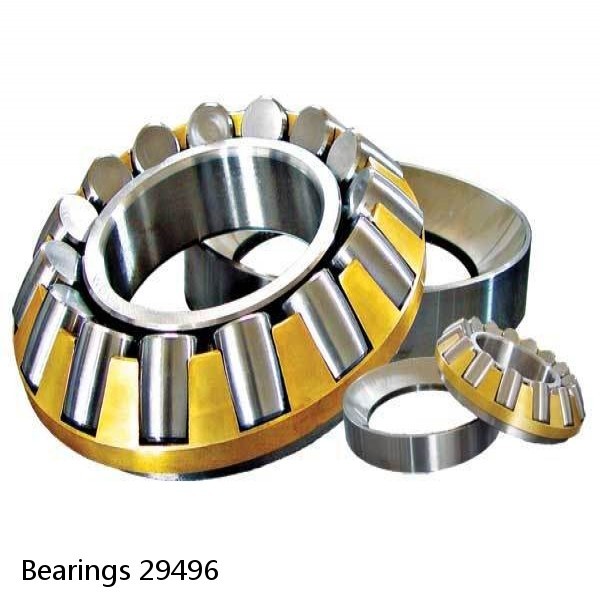 Bearings 29496
Bearings 29496 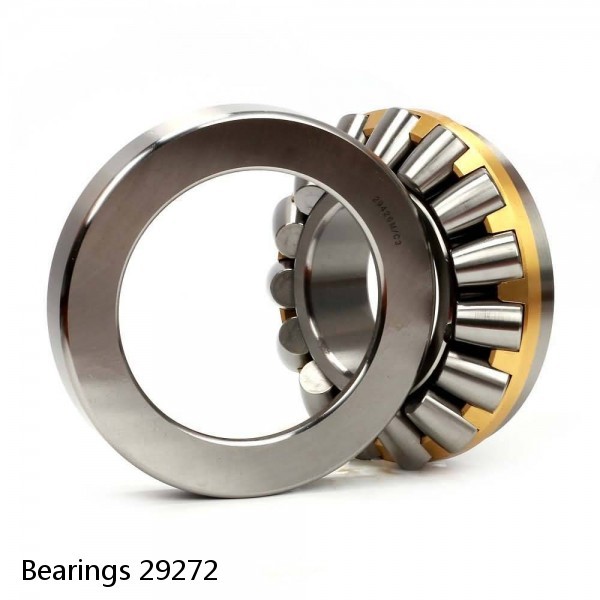 Bearings 29272
Bearings 29272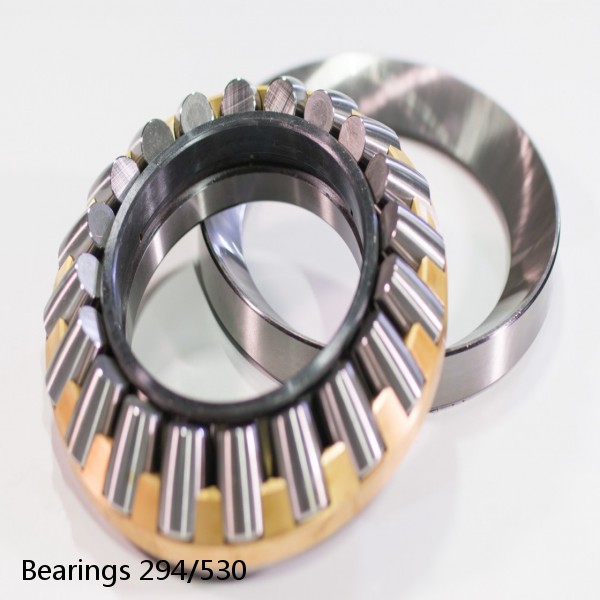 Bearings 294/530
Bearings 294/530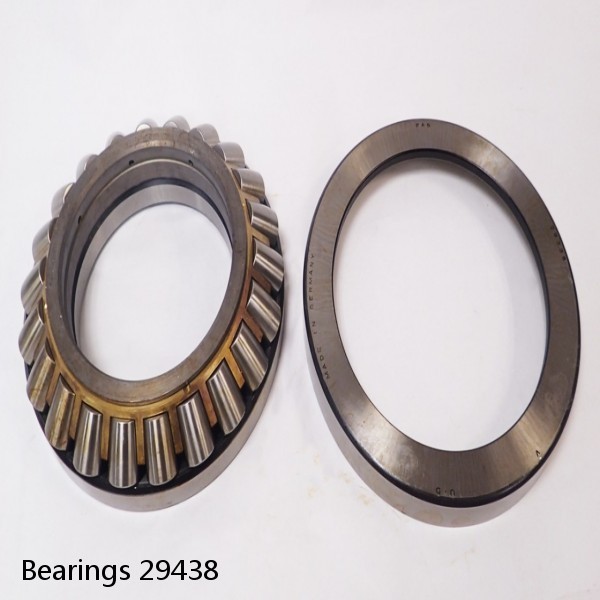 Bearings 29438
Bearings 29438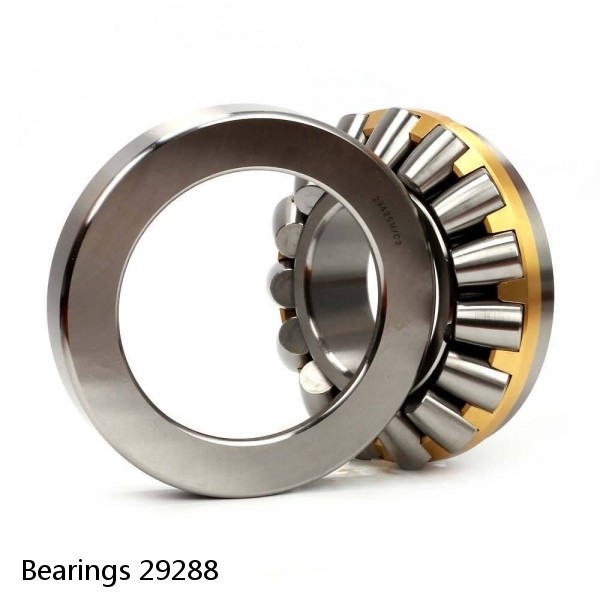 Bearings 29288
Bearings 29288